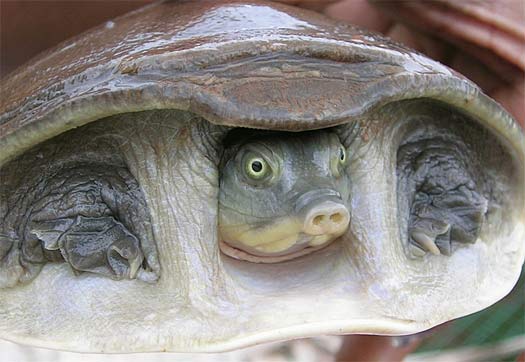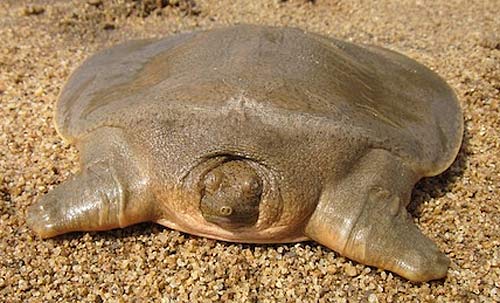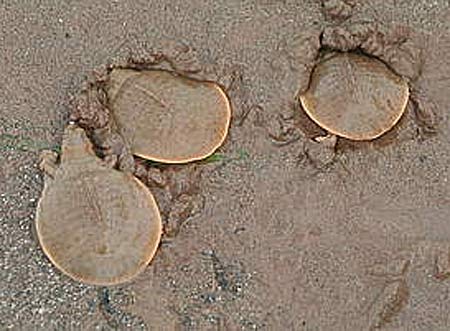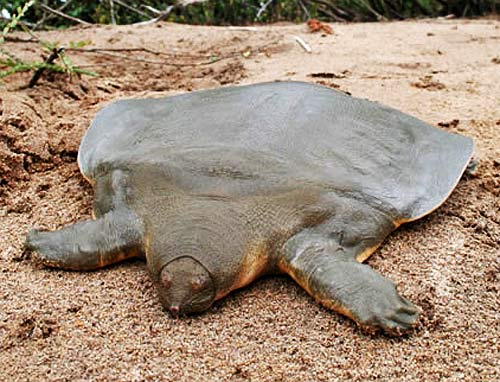Cantor’s Giant Softshell Turtle – Mud Lurker

Also known as the “Asian giant softshell turtle”, the species of fresh water turtle known as Cantor’s giant softshell turtle is named after Danish physician and zoologist Theodore Edward Cantor. What shell you may ask, as the shell looks like it was made of playdough and got run over and smashed by a truck. How does the softshell protect them? Well, it may not have thick tiles covering the outside but there is still a layer of bone beneath. Found in eastern and southern India, Bangladesh, Burma, Thailand, Malaysia, Cambodia, Vietnam, eastern and southern China, Singapore, the Philippines, and Indonesia, this turtle is unfortunately considered endangered because of habitat loss and hunting. However, recent discoveries of populations still producing hatchlings and showing up here and there in muddy Asian rivers have given conservationists room for hope.


When they reproduce, they tend to lay about 20-28 eggs during the early months. These turtles grow to about 6 feet (2 meters) long, and spend 95 percent of their lives buried under dirt and motionless, with only its mouth and eyes exposed. An ambush predator, these turtles survive by feeding on crustaceans, mollusks, and fish. All that lying around motionless in the mud and sand makes them hard to find. But since the new populations turtles have been found conservation efforts have increased in an attempt to save the species from extinction.

